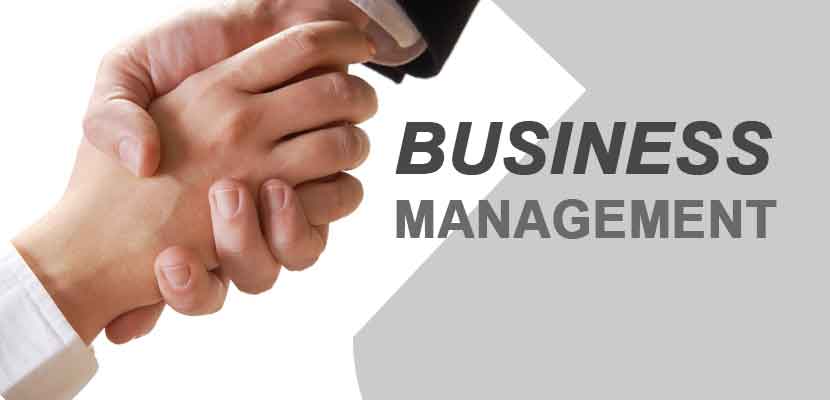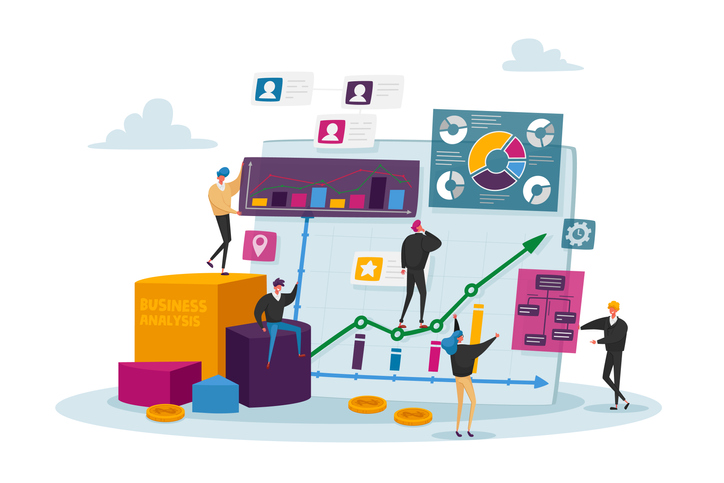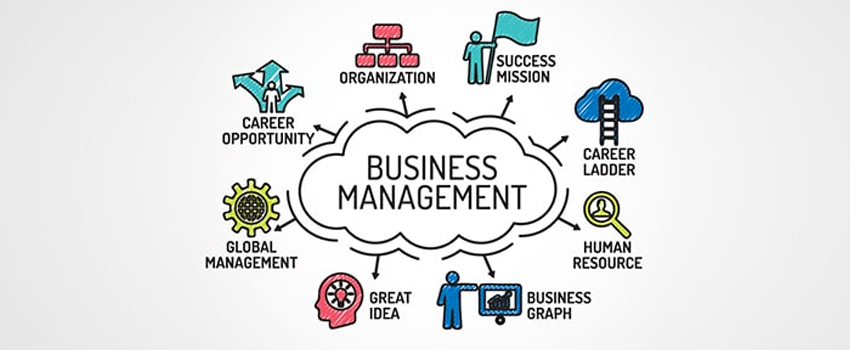SAFe Accreditation: Empowering Leaders in Scaled Agile Frameworks
The landscape of project management is developing, and SAFe Certification stands as a pivotal element for leaders seeking to implement the Scaled Agile Structure properly. This accreditation furnishes professionals with important skills to promote collaboration and innovation within their groups, ultimately enhancing organizational efficiency. Nonetheless, the journey to ending up being a licensed SAFe leader involves greater than just acquiring expertise; it encompasses comprehending the nuanced roles and duties within active environments. As we check out the details of SAFe Certification, the effects for leadership effectiveness and business success warrant much deeper assessment.
Comprehending SAFe Qualification
SAFe accreditation, which represents Scaled Agile Framework certification, is a credentialing program made to furnish professionals with the knowledge and abilities required to carry out nimble techniques at scale within their companies. The SAFe framework offers a structured technique that assists companies align their teams and handle larger projects successfully, making certain that active techniques are used consistently across various levels.
The accreditation incorporates numerous functions, consisting of SAFe Agilist, SAFe Professional, and SAFe Program Professional, each focusing on various elements of the structure. The program emphasizes the value of lean concepts, continual delivery, and collaboration among groups, cultivating a setting conducive to technology and efficiency.
Individuals undertake extensive training that incorporates theoretical knowledge with useful application, enhancing their capability to lead dexterous improvements. The curriculum includes subjects such as dexterous groups, program implementation, and profile administration, guaranteeing that certified experts are fluent in all elements of the SAFe method.
Advantages of SAFe Certification
Acquiring a Risk-free accreditation supplies numerous advantages for specialists looking to enhance their jobs in agile job administration. First and foremost, it outfits individuals with a thorough understanding of the Scaled Agile Structure, allowing them to successfully apply dexterous principles throughout big companies. This knowledge is essential as services progressively embrace nimble methodologies to improve productivity and adaptability.
Additionally, SAFe certification enhances a candidate's marketability and job prospects. As companies seek certified professionals to lead their nimble changes, qualified people can regulate greater salaries and stand apart in a competitive task market. Acquiring this qualification demonstrates a dedication to continual knowing and professional growth, which is very concerned by companies.
Networking chances likewise emerge from SAFe qualification, linking individuals with a community of similar specialists and sector leaders. This can bring about partnership, understanding, and mentorship sharing, additional improving one's expert experience.
Finally, licensed professionals are usually better outfitted to promote a society of cooperation and advancement within their groups, driving effective results in dexterous tasks. Overall, the advantages of SAFe accreditation are manifold, making it an important financial investment for those in the active task management domain name.
The Qualification Refine
The trip to achieving SAFe accreditation involves an organized process made to ensure candidates are well-prepared for nimble leadership roles. This process generally starts with selecting the suitable SAFe qualification that lines up with one's occupation desires and business needs, such as SAFe Agilist, SAFe Practitioner, or SAFe Program Consultant.
Prospects are after that encouraged to take part in a thorough training program, normally carried out by an accredited SAFe instructor - SAFe DevOps certification. These training courses cover vital ideas, principles, and techniques of the Scaled Agile Structure, supplying individuals with important insights and sensible expertise
Complying with the training, prospects should pass an accreditation exam to show their understanding and competence in applying SAFe concepts. The examinations are designed to examine not only understanding yet likewise the capability to implement agile techniques properly within a scaled setting.
When accredited, individuals get to a wide range of resources, including neighborhood networks and continuous discovering possibilities, which additionally enhance their nimble leadership capabilities. Keeping qualification requires constant expert advancement, ensuring that leaders remain existing with developing methods within the structure. Inevitably, the qualification procedure is an extensive yet satisfying pathway for those intending to excel in nimble leadership.
Responsibilities and functions
Effective execution of the Scaled Agile Structure (SAFe) counts heavily on plainly defined roles and duties within a company. These roles are essential for making certain positioning, effectiveness, and efficient collaboration throughout groups.
At the team level, key roles consist of the Scrum Master, Product Proprietor, and Agile Group Members. The Scrum Master assists in the agile procedure, making certain that the group adheres to the SAFe principles while eliminating impediments.
At the program level, the Launch Train Engineer (RTE) plays a vital function in orchestrating the Agile Launch Train (ART), ensuring smooth program implementation and positioning throughout several groups. In addition, the system engineer and local business owner provide technological advice and tactical vision, specifically.
Continuous Renovation in SAFe
Continuous enhancement is a foundation of the Scaled Agile Framework (SAFe), driving organizations to boost their procedures, items, and general efficiency. By fostering a society of continuous renovation, SAFe motivates teams to on a regular basis evaluate their operations and outcomes, determine ineffectiveness, and execute methods for enhancement. This iterative process not just increases performance however also straightens teams with the company's strategic purposes.
Central to this approach are the Inspect and Adapt (I&A) workshops, which give organized possibilities for representation and discovering. During these sessions, teams analyze performance metrics, review obstacles, and generate actionable insights to direct future iterations. Furthermore, making use of Agile Release Trains (ARTs) assists in cross-functional partnership, making it possible for teams to share finest techniques and drive collective improvement.
Moreover, Lean-Agile leadership plays a crucial role in promoting a mindset of constant improvement. Leaders are charged with cultivating an atmosphere where trial and error is urged, and failings are deemed finding out opportunities. By embedding continuous enhancement into the organizational society, SAFe equips groups to stay agile and responsive to transforming market needs, ultimately improving their ability to deliver value to clients.

Conclusion
In verdict, SAFe Certification serves as a crucial tool for leaders intending to implement active methods effectively within their organizations. Ultimately, SAFe Qualification adds substantially to organizational success and durability.
The landscape of project monitoring is advancing, and SAFe Certification stands as a crucial component for leaders seeking to apply the Scaled Agile Framework properly.Acquiring a Risk-free certification provides countless benefits for experts looking to enhance their occupations in agile job management. The Scrum Master facilitates the nimble process, making sure that the team sticks to the SAFe concepts while removing obstacles. By installing continual improvement right into the business culture, SAFe encourages groups to stay agile and receptive to changing market demands, ultimately improving their capability to provide value to consumers.

|
Master Agile Practices Through Comprehensive SAFe Qualification
In a progressively complex company landscape, understanding Nimble practices through extensive SAFe certification has actually emerged as a critical expertise for professionals intending to enhance organizational performance. As organizations look for to browse the challenges of fast modification, the application of SAFe principles offers a pathway to improved results.
Comprehending SAFe Framework

At its core, the Risk-free structure comprises 4 levels: Group, Program, Large Service, and Profile. Each degree addresses details aspects of Nimble delivery, from taking care of small teams of designers to supervising several programs and straightening strategic efforts with business goals.
SAFe motivates partnership among cross-functional groups, promoting a setting where continual enhancement and technology are paramount. By emphasizing alignment, transparency, and integrated high quality, the structure equips organizations to respond swiftly to market modifications while supplying worth to clients.
Furthermore, SAFe supports different methods, such as Scrum and Kanban, allowing companies to tailor their method according to certain job demands. This adaptability ensures a robust structure for companies aiming to grow in a quickly evolving service landscape.
Advantages of SAFe Certification
Often looked for after in the Agile area, Risk-free qualification uses various advantages for companies and professionals alike. One of the main benefits is the enhancement of skills and expertise in carrying out the Scaled Agile Structure (Secure), which furnishes people with the devices essential to drive effective Agile transformations. This accreditation indicates a commitment to expert growth, making prospects much more competitive in the job market.
For organizations, having accredited specialists cultivates a society of continuous enhancement and cooperation, important for adapting to altering market demands. It allows groups to align their job with critical objectives, eventually improving efficiency and effectiveness. Firms with a greater proportion of SAFe-certified staff members commonly experience minimized time-to-market and raised top quality of deliverables.
Moreover, Risk-free accreditation promotes networking chances with other Agile practitioners, making it possible for the exchange of ideal techniques and experiences (SAFe Lean Portfolio Management). This collective network can significantly add to organizational and personal growth. In recap, acquiring Risk-free certification not just enhances specific abilities however also reinforces the overall Agile maturity of an organization, leading to lasting success in today's dynamic company setting
Trick Components of SAFe
Building on the benefits of Risk-free qualification, understanding the vital elements of the Scaled Agile Framework is important for effectively applying its principles. The Secure structure consists of 4 key degrees: Group, Program, Big Solution, and Profile. Each degree addresses different aspects of nimble practices, assisting in placement and distribution throughout the company.
At the Group level, cross-functional groups work collaboratively using Nimble techniques, such as Scrum or Kanban, to deliver step-by-step worth. The Program level concentrates on the Agile Release Train (ART), which is a long-lived group of Agile teams that intends, dedicates, and carries out with each other. The Big Remedy level addresses complex remedies that need numerous ARTs to function in performance, guaranteeing sychronisation and combination.
Getting Ready For SAFe Qualification
Preparing for Secure certification needs a strategic strategy to guarantee an extensive understanding of the framework. Acquaint yourself with the core concepts and worths of the Scaled Agile Structure (SAFe) Evaluation sources provided on the Scaled Agile web site, including the Secure structure documentation, case studies, and whitepapers, to develop a strong structure.
Following, take into consideration registering in an official SAFe training course. These courses, led by certified SAFe Program Professionals (SPCs), offer structured learning experiences that cover vital principles and functional applications. Involving with peers and teachers can enhance your grasp of the material.
In addition, experiment example examination questions to acquaint on your own with the layout and types of concerns you may experience. Signing up with research study groups or forums can assist in expertise exchange and give support from fellow candidates.
Applying SAFe in Organizations
Applying the Scaled Agile Structure (Secure) within companies requires a structured method that straightens groups and processes toward an usual objective. The successful application of SAFe begins with establishing a clear understanding of its principles, including partnership, placement, and transparency. Organizations should initially examine their current procedures and determine locations for improvement, guaranteeing they are ready for the cultural shift that SAFe requires.
Training and certification for groups aid equip members with the necessary abilities and expertise to operate successfully within the Risk-free structure. This includes establishing Agile Launch Trains (ARTs), which serve as the foundation for supplying value across the company.
Routine planning sessions, such as Program Increment (PI) planning, should be performed to synchronize teams and prioritize work. In addition, leveraging metrics to measure progression and performance is vital for continuous renovation. By constantly applying Risk-free concepts and methods, companies can achieve greater dexterity, boost collaboration, and ultimately drive much better business results. Welcoming this framework positions companies to respond promptly to market review modifications and client needs.

Verdict
To conclude, grasping Nimble methods via detailed Secure qualification significantly contributes and enhances professional capacities to business effectiveness. The knowledge acquired from understanding the Secure structure, together with its crucial components, assists in successful transformations and improves collaboration amongst teams. Obtaining this certification placements people positively in a competitive task market, highlighting the importance of constant enhancement and placement within companies. Welcoming Risk-free eventually brings about boosted performance and higher high quality deliverables.
The SAFe (Scaled Agile Framework) structure serves as a structured technique for applying Nimble techniques at range across big companies. One of the main advantages is the enhancement of skills and knowledge in executing the Scaled Agile Structure (Risk-free), which equips individuals with the devices required to drive effective Agile makeovers. In summary, getting Risk-free accreditation not just improves specific abilities however also strengthens the overall Agile maturation of an organization, leading to sustainable success in today's vibrant company environment.
Building on the advantages of Risk-free qualification, understanding the crucial parts of the Scaled Agile Framework is vital for effectively implementing its principles.Executing the Scaled Agile Structure (Secure) within organizations necessitates a structured technique that straightens teams and procedures toward a common goal.
|
Breakthrough Your Occupation With SAFE Accreditation: Agile Expertise Unlocked
In today's swiftly evolving service landscape, getting SAFe certification can dramatically enhance your occupation trajectory by furnishing you with crucial agile competence. As business increasingly seek experts that can lead nimble changes, comprehending the pathways to get this accreditation comes to be crucial.
Comprehending SAFe Accreditation
SAFe Qualification functions as a critical credentials for experts looking for to boost their careers in active project management. Created by Scaled Agile, Inc., the Scaled Agile Structure (SAFe) provides an extensive strategy to executing active methods throughout large companies, making it necessary for experts aiming to browse complicated job settings successfully.
The qualification procedure includes different levels, consisting of Secure Agilist, SAFe Specialist, and SAFe Program Expert, each targeting different roles within dexterous groups. These accreditations are designed to gear up professionals with the understanding and tools required to lead agile transformations, foster collaboration across groups, and boost task shipment results.
Recognizing SAFe Qualification involves recognizing check this its emphasis on straightening approach with execution, advertising a society of continual renovation, and leveraging agile principles at range. This framework not just improves individual expertises but likewise contributes to organizational dexterity, allowing businesses to respond swiftly to market changes and client demands.
Achieving SAFe Certification signifies a commitment to expert development and a solid foundation in dexterous techniques, positioning people as beneficial assets in their organizations. By embracing this accreditation, experts can boost their capability, ensuring they stay competitive in a swiftly developing task market.
Advantages of SAFe Qualification
Acquiring Secure Qualification uses numerous benefits for professionals in the nimble job management arena. This certification not only enhances private qualifications yet likewise shows a commitment to grasping the Scaled Agile Framework, which is progressively acknowledged by employers. With a Risk-free accreditation, specialists can verify their expertise and abilities in nimble techniques, making them extra affordable in the work market.
Among the crucial advantages is the capacity to lead active makeovers within organizations. Certified people are equipped with the approaches and tools needed to apply and scale nimble techniques successfully, driving effectiveness and efficiency. In addition, organizations with SAFe-trained experts frequently experience enhanced placement throughout groups, cultivating much better partnership and development.
Additionally, Secure Qualification opens doors to networking opportunities within the nimble area. Experts can connect with like-minded individuals, share best practices, and remain updated on industry patterns. The qualification likewise supplies access to exclusive sources, including webinars and workshops, which can additionally boost one's proficiency.
Ultimately, obtaining Secure Certification equips specialists to advance their jobs, contribute meaningfully to their companies, and lead the charge in dexterous quality. SAFe Agilist.
Pathways to Get Accreditation

To begin, candidates normally take part in a Secure training course, which serves as the foundational action for accreditation. These courses are assisted in by SAFe Program Specialists (SPCs) and cover essential concepts, techniques, and duties within the Risk-free structure. After completing the training, candidates must pass a qualification test to verify their expertise and abilities.
There are numerous certifications readily available, such as SAFe Agilist (SA), SAFe Specialist (SP), and Secure Scrum Master (SSM), to name a few. Each qualification needs details training sessions and examinations, allowing experts to choose a path that straightens with their job objectives.
In addition, preserving SAFe accreditation demands recurring education and learning and revival, ensuring that experts remain current with evolving Agile techniques. By strategically picking the suitable training and certification see paths, individuals can considerably enhance their competence and profession trajectory within the Agile landscape.
Real-World Applications of SAFe
Applying the Risk-free framework in organizations has verified to be very effective in improving efficiency and placement throughout teams. This method helps with cooperation amongst various divisions, allowing teams to work towards an unified set of goals. By breaking down silos and promoting communication, SAFe enables organizations to respond swiftly to market adjustments and customer requirements.

Moreover, SAFe is instrumental in enhancing project visibility with metrics and reporting devices, permitting stakeholders to make informed decisions. It additionally encourages a society of constant enhancement, promoting routine retrospectives and adaptation of techniques. Ultimately, the real-world applications of Risk-free show its adaptability and performance in driving successful outcomes across numerous markets, making it a crucial framework for modern companies.
Profession Advancement Opportunities
The fostering of the Secure framework not only improves business efficiency yet also opens up considerable profession advancement possibilities for experts within the Agile and task monitoring areas. As companies progressively accept Agile techniques, the demand for SAFe-certified specialists proceeds to rise, creating an affordable edge for those furnished with this accreditation.
SAFe certification supplies specialists accessibility to a selection of duties, consisting of Agile Launch Train (ART) roles, Scrum Masters, and Release Train Engineers. Moreover, individuals can change into management positions such as Program Supervisors or Portfolio Supervisors, thus enhancing their responsibilities and influence within the company. The accreditation also shows a dedication to continuous learning and flexibility, qualities very valued by employers.
Additionally, professionals with Secure qualification frequently take pleasure in higher gaining potential. Industry reports suggest that licensed individuals usually command salaries that go beyond those of their non-certified peers. The networking chances afforded by Secure areas can lead to beneficial connections and profession leads.
Final Thought
Finally, obtaining Risk-free accreditation significantly improves professional qualifications in the world of dexterous methodologies. This certification not only assists in proficiency of dexterous techniques but also promotes chances for profession development across numerous functions, including Scrum Masters and Program Managers. By outfitting individuals with necessary skills and knowledge, Secure certification fosters leadership abilities needed for driving successful agile changes within organizations, eventually adding to better earning possibility and useful connections within the dexterous community.
Obtaining Secure Accreditation supplies various benefits for professionals in the agile task management arena. With a Secure qualification, experts can verify their understanding and skills in dexterous techniques, making them much more affordable in the task market.
These programs are promoted by SAFe Program Professionals (SPCs) and cover essential principles, methods, and roles within the Risk-free framework.In verdict, acquiring Risk-free certification considerably boosts expert credentials in the world of active techniques. By gearing up people with necessary abilities and expertise, SAFe accreditation promotes leadership capacities necessary for driving successful dexterous transformations within companies, ultimately adding to better earning possibility and valuable connections within the dexterous area.
}